John Morley: A brush with the artist who changed the world of snowdrops
Tilly Ware meets the artist and galanthophile John Morley in his Suffolk garden, home to the oldest snowdrop nursery in the country.
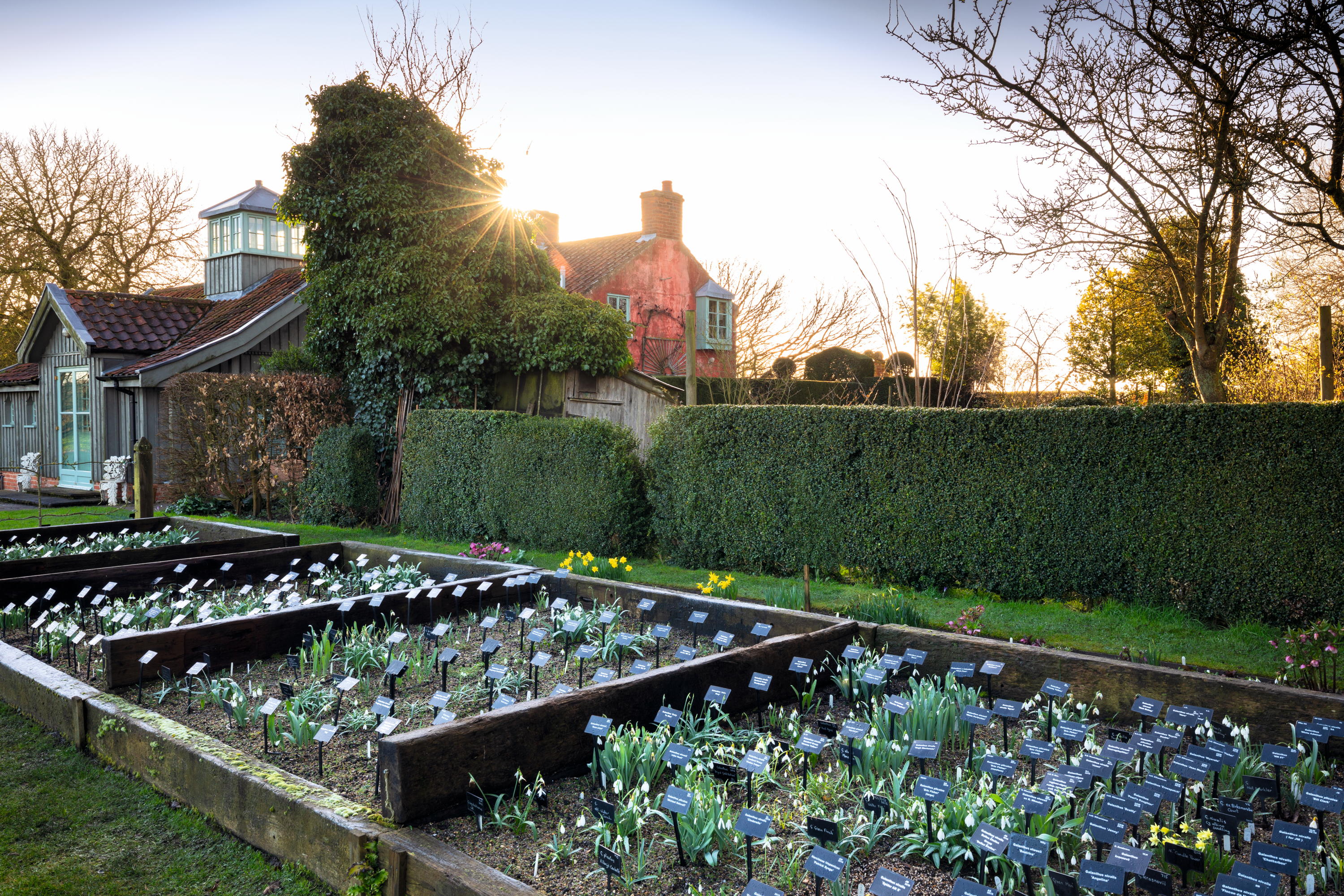
The 2024 North Green Snowdrops catalogue is already a collector’s item. After 40 years, the artist and serious galanthophile John Morley has decided to close his business, the oldest snowdrop nursery in the country. His first catalogue in 1984, written in green ink by a former typist of Winston Churchill’s and printed on folded foolscap, listed 22 different snowdrops ranging from £2.50 and £5 per bulb. In the early years, Mr Morley’s eloquent plant descriptions were accompanied by his exquisite woodcuts, paintings and line drawings; the later catalogues include glossy photos and increasingly exciting rarities, many of which Mr Morley discovered in his own garden in north Suffolk.
Gardening and art were always intertwined for Mr Morley, whose grandfather was a gardener, and he remembers going to his allotments to draw. Trained at the Royal Academy (RA), he was initially a landscape painter, but became obsessed by auriculas, buying choice varieties from famed breeder Gordon Douglas and painting them for him. Snowdrops began to intrigue him as they were out at such ‘an interesting time of year, and I could surround myself with flowers in winter’.
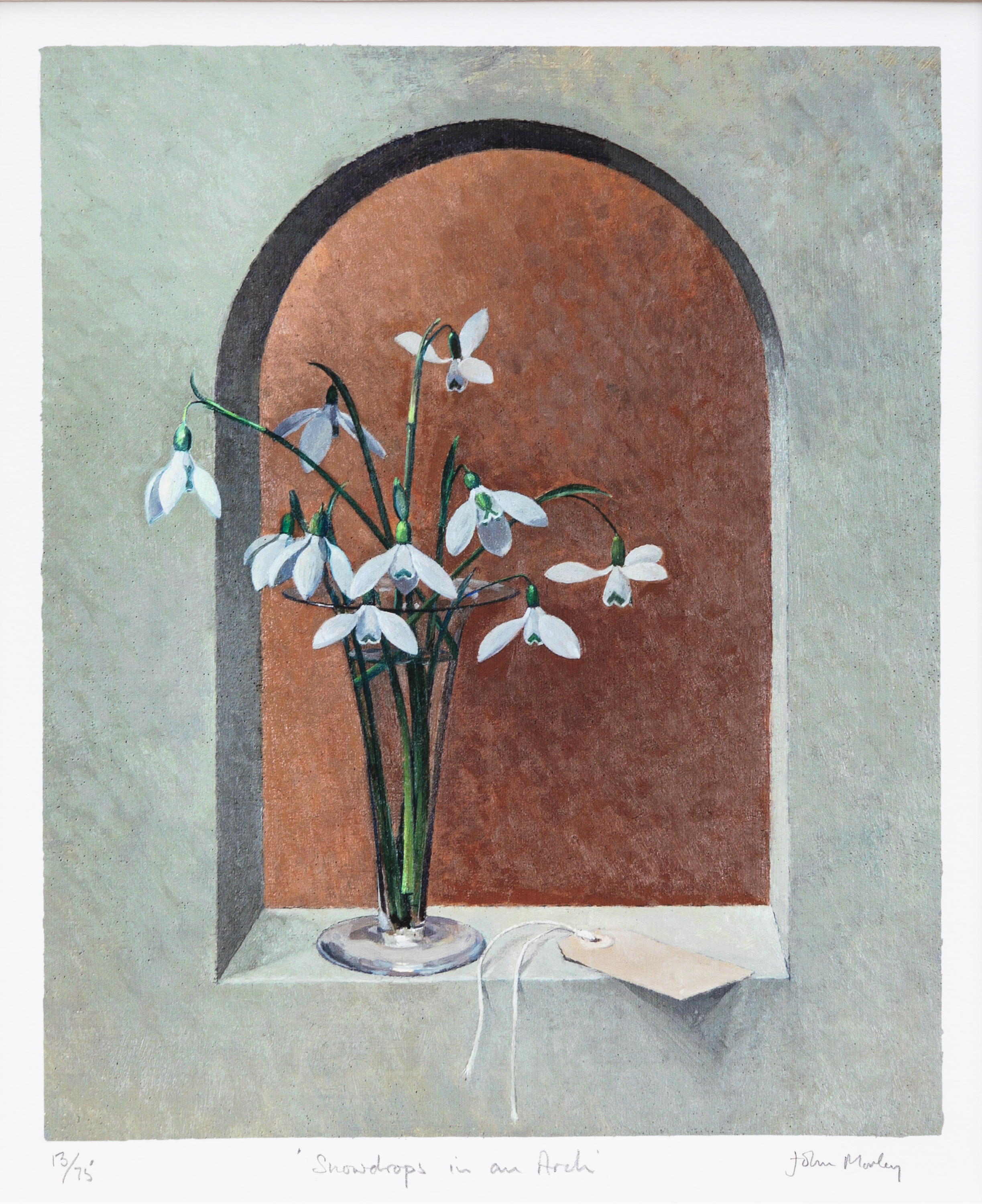
Snowdrops in an arch by John Morley
Mr Morley met his wife, Diana, when teaching at the RA in the 1970s. Together, they found a set of near-derelict cottages on a Suffolk estate and decided they were ‘going to make Sissinghurst here’. The house is a ramble of old brick floors and richly coloured rooms crammed with Mr Morley’s paintings, engravings, books and ceramics. The garden wraps itself around the building, with tall yew hedges buffering against the easterlies.
As Mr Morley’s collection of snowdrops increased, so did his circle of highly knowledgeable friends. It was Tate’s deputy collector who introduced him to Priscilla, Lady Bacon at Raveningham Hall in Norfolk. ‘We got on terribly well,’ remembers Mr Morley, ‘and she was very keen on trade and making money — she encouraged me to grow commercially.’
Thus his kitchen-table business began, fed by advice from many snowdrop experts, to whom Mr Morley would ‘gossip on the phone for hours’. Primrose Warburg, the grande dame of snowdrops, invited him to her exclusive snowdrop parties and Cedric Morris would press plants on him: ‘You never knew who you would meet at Benton End. There were easels all over the garden, and Cedric saying “you ought to take a bit of that”.’ Mr Morley’s motto was to ‘try everything’ and eventually his snowdrops began to interbreed and produce interesting crosses.
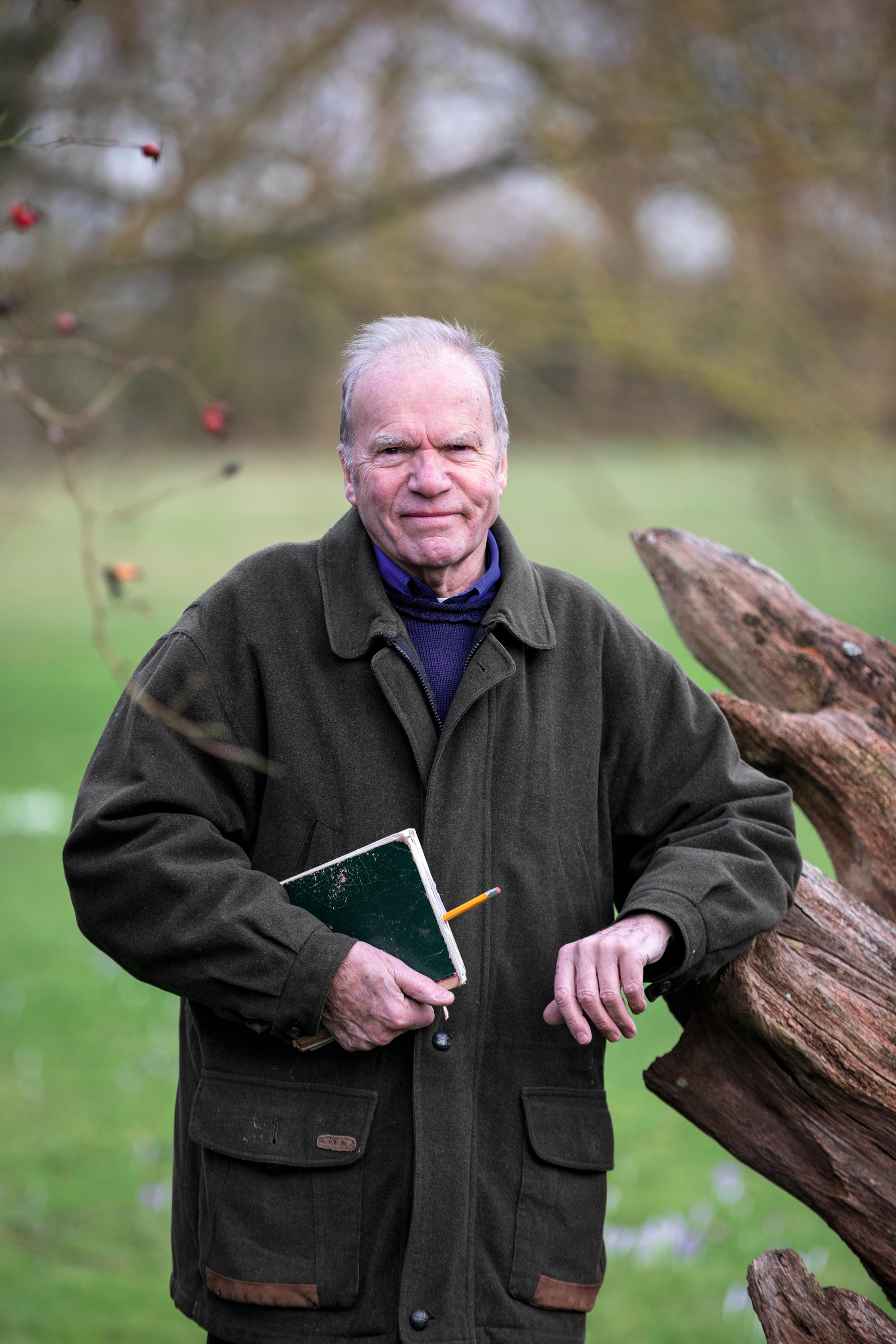
John Morley with his snowdrop notebook. His early plant catalogues are enlivened with woodcuts, paintings and drawings.
A potential new variety will be twin-scaled and brought on for three years before being named and sold as a distinct plant. ‘I love the naming,’ admits Mr Morley. Indeed, the present catalogue lists 53 snowdrops named by him and Diana, including the Christmas flowering ‘Three Ships’ and the even earlier ‘Remember, Remember’.
One of the Morleys’ favourites is the charming ‘Trumps’, first spotted by the snowdrop expert Matt Bishop in their garden in the 1990s. ‘We called it that because it was by far the most wonderful one we’d found,’ recalls Mr Morley. ‘Trumps’ has a perfect inverted heart-shape on both inner and outer segments, a vivid-green ovary and outer petals that reflex in a pagoda shape as the flower matures. Another of their favourites, ‘Blue Moon’, they almost lost, but it has been nurtured back into production. It has very pale ovaries, narrow upright flowers and soft blue leaves; it sells for £120 per bulb.
Exquisite houses, the beauty of Nature, and how to get the most from your life, straight to your inbox.
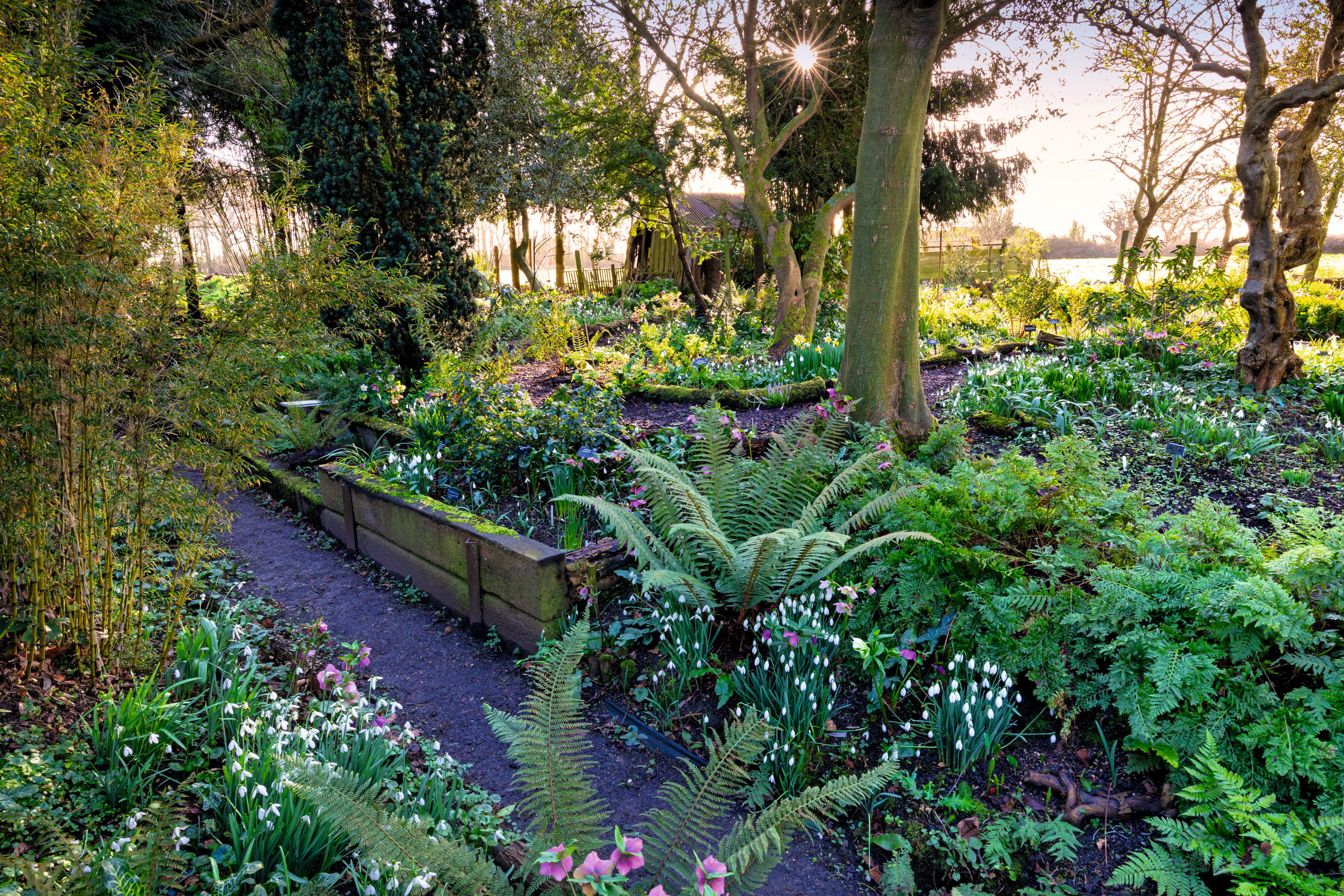
Some 500 varieties of snowdrops grow among hellebores, ferns and arums. Clumps of galanthus are labelled so that any natural crosses can be identified.
Stock bulbs are grown in raised beds with added grit, with the more tricky types tucked inside cold frames. The hybridising happens on the north side of the house, which is filigreed with narrow paths and home to a spectacular array of ferns, shrubs and arums, as well as more than 500 snowdrop varieties. Every plant is meticulously labelled with the cultivar name and its origin. It is here that a clump of Galanthus elwesii ‘Comet’, salvaged by Mr Morley from a compost heap at RHS Wisley in Surrey, began to cross with G. x allenii and G. elwesii ‘Jubilee Green’ to create ‘Green Comet’, described in the catalogue as ‘a huge snowdrop and one of the very finest to have originated in the garden’.
Under a swaying patch of bamboo, the swelling snouts of Galanthus ‘The Groom’ push through leafmould. ‘That’s four figures there,’ notes Mr Morley as we carefully pick our way past. ‘The Groom’ is one of the scarcest, most sought-after cultivars and a potential buyer must submit their bid by tender, with the reserve price set at £250 per bulb. ‘We send out all bulbs wrapped in moss in the green in March,’ explains Mr Morley. ‘I want it to be like a birthday present.’
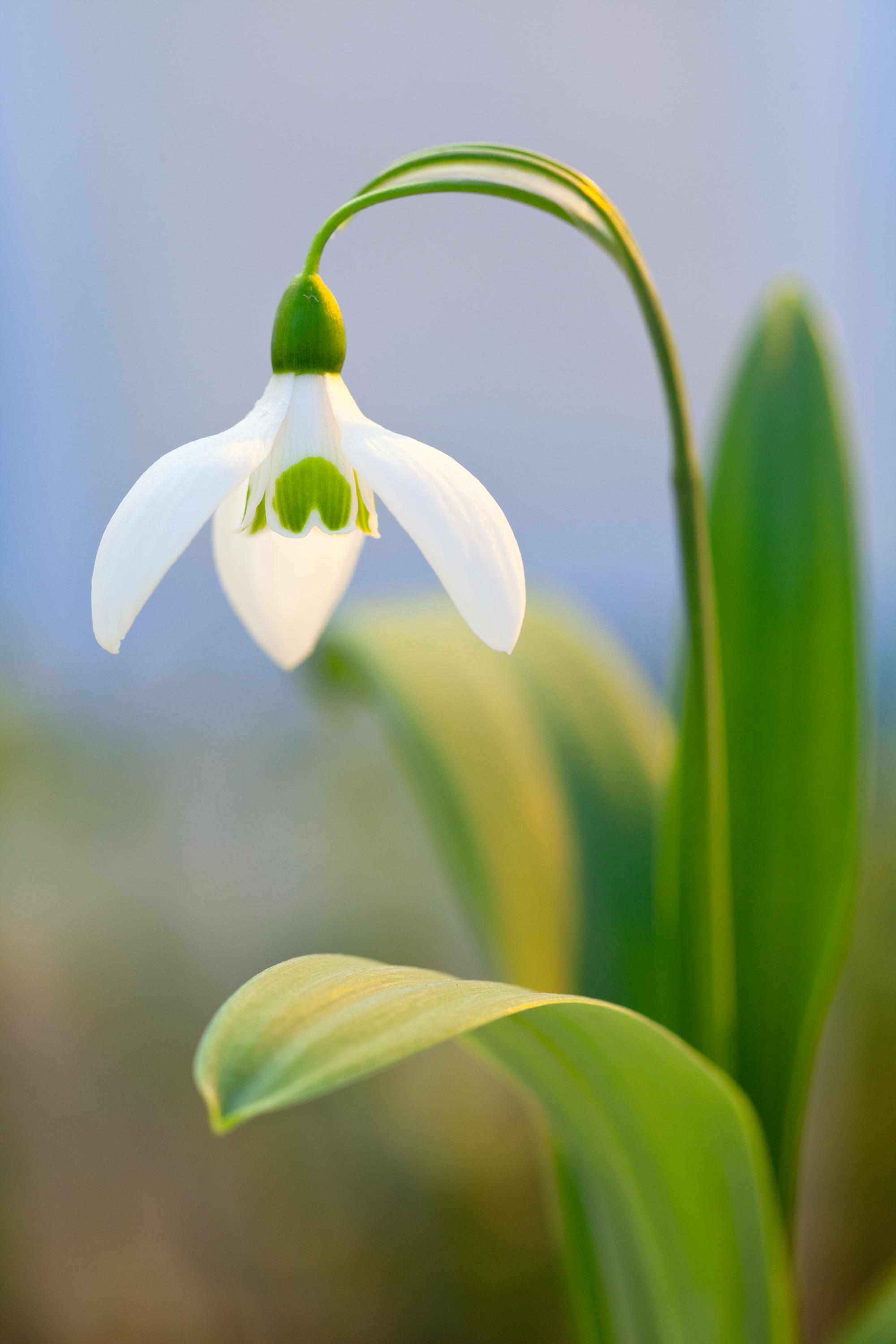
‘Green Comet’ was discovered in the garden, a cross between G. elwesii ‘Comet’, G. x allenii and G. elwesii ‘Jubilee Green’.
A snowdrop’s intricate, minute variations demand close attention, a quality present in all Mr Morley’s art. The final page of the current catalogue shows one of his beautifully observed paintings: a heavy-bottomed glass of snowdrops backlit by candlelight, terracotta pots stacked up behind, exuding a warmth and texture that makes you feel as if you can touch everything. His still lifes often feature vegetables, fruit and ceramics, as well as flowers, all displayed in a harmonious calm, glowing out from the canvas. A regular exhibitor at the RA’s Summer Exhibition since 1962, Mr Morley has spent 30 years with the Piccadilly Gallery and has a studio in Prague, Czech Republic, where he likes ‘getting away from everything. The snow makes it quiet and I can paint all of the time’.
Quietness permeates his work, capturing a settled and peaceful world amid shifting light and seasons. The garden at North Green also feels eminently timeless, isolated by its long track and endless fields, a place where many old friends — including Valerie Finnis, Beth Chatto, Liz Strangman and former RHS director Chris Brickell — are honoured through the plants that they passed on, thanks to Mr Morley’s encyclopaedic knowledge and top-quality plantsmanship.
‘John Morley: Artist Gardener’ is at the Garden Museum, London W1, from March 19–April 20 (www.gardenmuseum.org.uk). To request a snowdrop catalogue, visit www.northgreensnowdrops.co.uk
Five special snowdrops from North Green
Galanthus ‘Trumps’
An instantly beguiling flower with heart-shaped markings on inner and outer segments. Early flowering, it will grow to about 6in tall and has broad, grey-green foliage. Vigorous and will increase well. AGM
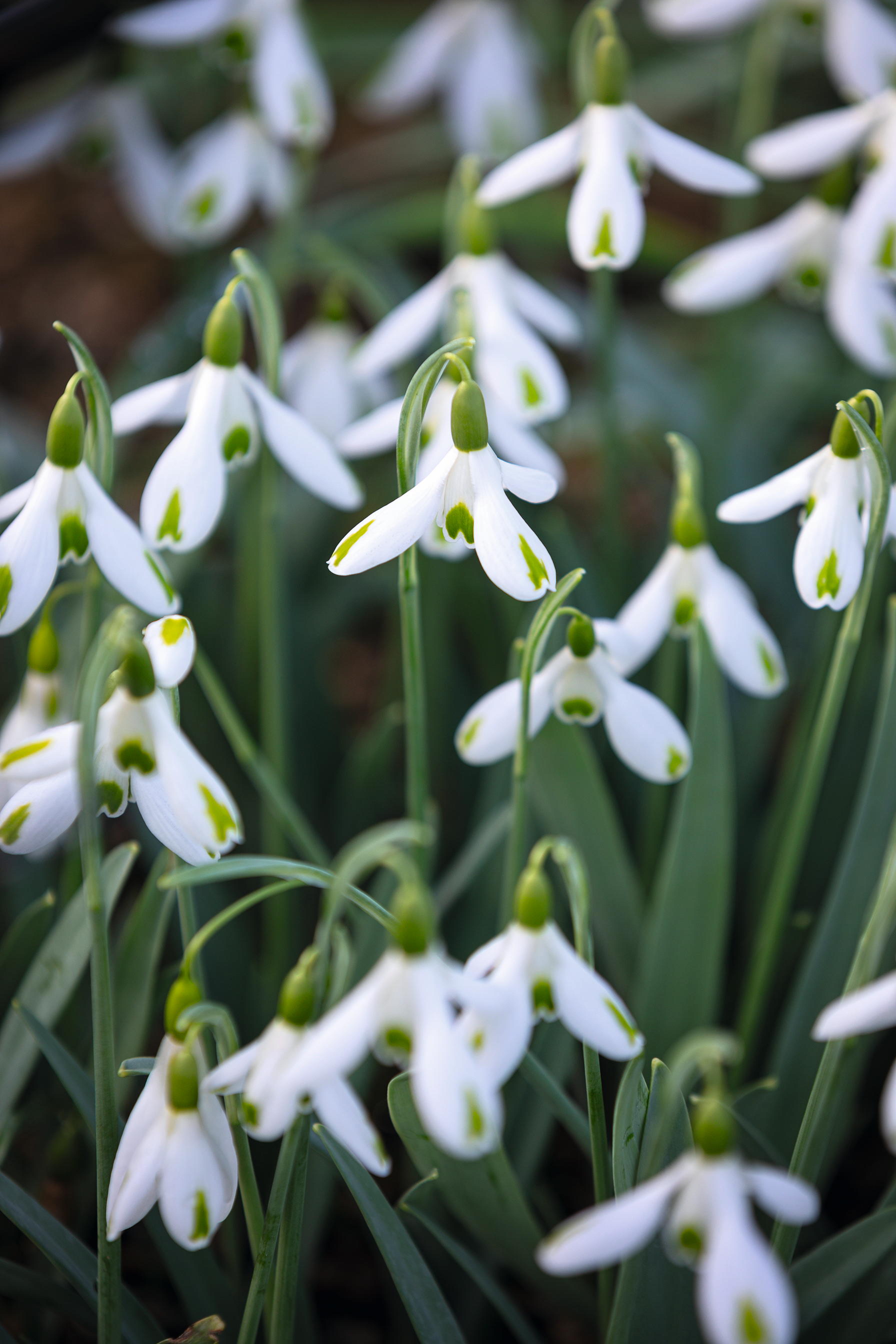
Galanthus ‘Trumps’
Galanthus ‘Juliet Berkeley’
Originally from Ellen Willmott’s garden at Warley Place, Essex, rescued by her great niece. The inner segment is washed in soft green, with a prominent dark, rich-green mark
Galanthus ‘Hoggets Narrow’
An autumn-flowering snowdrop from the Hiemalis Group, with exceptionally long outers and a broad inverted V on the inners. The anthers shine through the petals, once mature, to give a warm orange glow just below the ovary
A post shared by Paddy Tobin (@paddytobin)
A photo posted by on
Galanthus ‘Gold Dust’
An extremely long flower with a bright-gold bridge mark at the apex of the inner segment, held on a short golden pedicel. Fragrant and elegant
Galanthus ‘Rodmarton Regulus’
A very handsome, large-flowered snowdrop found at Rodmarton Manor in Gloucestershire. The outer segments are long and boat-shaped, the inners have a broad, X-shaped marking
Tilly Ware is a gardener and gardening writer.